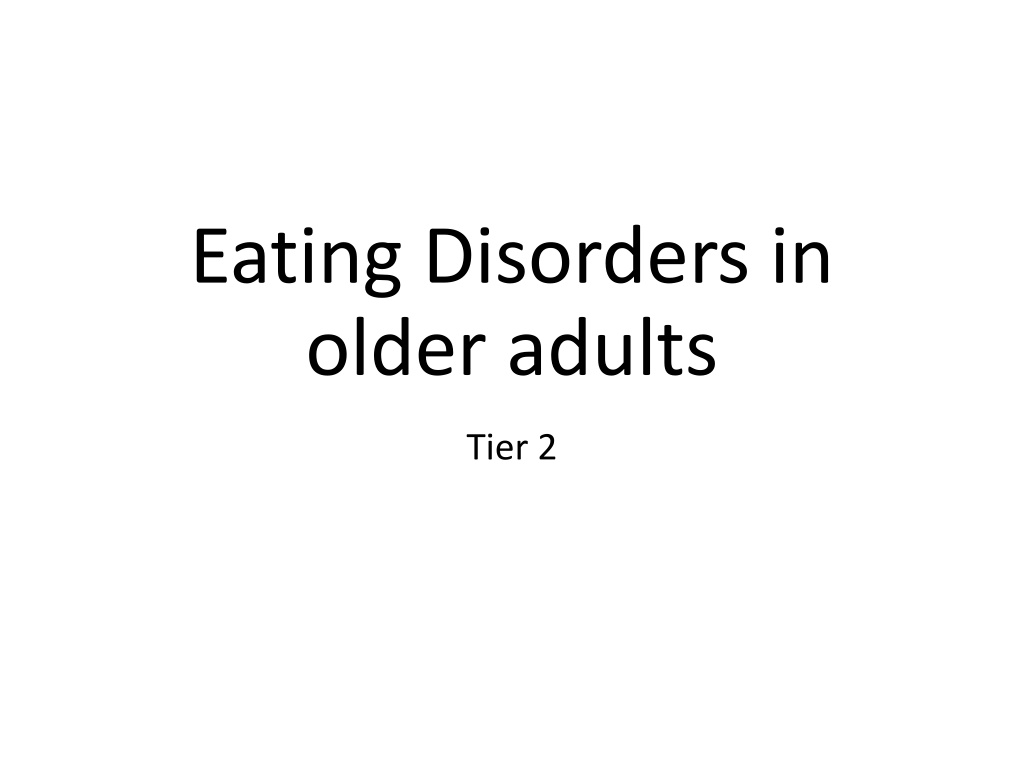Understanding Eating Disorders in Older Adults
Eating disorders can affect older adults too, yet they are often overlooked or misdiagnosed. Challenges in diagnosing these disorders arise from various underlying health conditions. Types of eating disorders include anorexia nervosa, bulimia nervosa, binge eating disorder, and others. Recognizing common symptoms such as significant weight loss and preoccupation with food is crucial for timely intervention. If you suspect an eating disorder in an older adult, seek medical help promptly for proper diagnosis and treatment, which may involve medication and psychological therapies.
Download Presentation

Please find below an Image/Link to download the presentation.
The content on the website is provided AS IS for your information and personal use only. It may not be sold, licensed, or shared on other websites without obtaining consent from the author. Download presentation by click this link. If you encounter any issues during the download, it is possible that the publisher has removed the file from their server.
E N D
Presentation Transcript
Eating Disorders in older adults Tier 2
Eating disorder An eating disorder is when the person has an unhealthy attitude to food which can over their life and make them ill. It can involve eating too much or too little, and/ or becoming obsessed with their body and shape There are treatment that can help recovery from an eating disorder Men and women of any age can get an eating disorder, but they most commonly affect young women aged 13 to 17 years of age. https://www.nhs.uk/conditions/eating-disorders/
Older adults and eating disorder There is a growing myth that eating disorders only occur in adolescents or young adults This is not true Eating disorders can occur in older adults too and often are not identified or diagnosed
Challenges Diagnosing eating disorders in older adults can be especially challenging because poor appetite and weight loss can be due to many causes such as physical causes ,medications ,sore mouth, depression or dementia. Healthcare professionals who work with older adults are often not trained to consider/ identify eating disorders in older patients Diagnosis is important as treatment is different
Types of eating disorders Eating disorders include anorexia nervosa bulimia nervosa binge eating disorder other less common ones They have significant physical and mental health consequences, even life-threatening ones.
Common symptoms Common symptoms include significant weight loss , maybe in a short period of time preoccupation with food and calories frequent references to feeling fat binge eating evidence of purging (including the presence of empty laxative packages) development of food rituals
Treatment If you suspect that someone has an eating disorder, request an appointment with GP as soon as possible After a full physical check, GP should refer to Old Age Psychiatry Services for support and management such as medication and psychological (talking) therapies. Resource: Beateatingdisorders.org.uk























